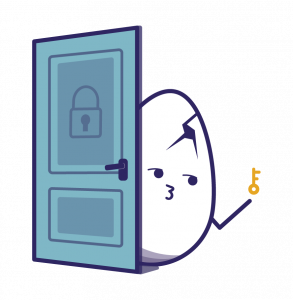4 Escape Games
 Overview: Escape games are activities in which participants, placed in a fictional environment, must search for and use a series of clues to solve puzzles and riddles in order to achieve a specific objective. Escape games are a great way to foster student engagement. They are a form of simulated experiential learning in which participants can progress in a safe space. They also encourage research, understanding and use of various materials, tools or knowledge. Escape games can be both cooperative and individual. Although they are known to be activities that take place in person, they can be adapted online.
Overview: Escape games are activities in which participants, placed in a fictional environment, must search for and use a series of clues to solve puzzles and riddles in order to achieve a specific objective. Escape games are a great way to foster student engagement. They are a form of simulated experiential learning in which participants can progress in a safe space. They also encourage research, understanding and use of various materials, tools or knowledge. Escape games can be both cooperative and individual. Although they are known to be activities that take place in person, they can be adapted online.
Tips and Tricks:
- Many media are available to adapt escape games to the online environment: websites, downloadable files, videos, etc. There is virtually no limit to what can be used online to create escape game material.
- Creating a puzzle or riddle where the course content or material has to be examined (not just browsed) is challenging. Identifying clear and specific learning outcomes is critical.
- Creating a consistent scenario is a complex task, especially without proper training. The storyline has to be both plausible and aligned with the course material. It is useful to design a general vision of the scenario at the beginning. Then, each step can be created in detail.
- It is important to find a way to supervise students while they are going through the activity (e.g. by you if the scenario allows it, or a by colleague).
- It is useful to prepare clues in case participants are stuck during the activity.
- Testing the puzzles and riddles is important. The mind of the creator does not necessarily work like the minds of the participants.
Duration: 30 minutes to 3 hours.
Re-playability: No.
Continuity: Escape games can eventually be linked together (or to other scenario-based activities) to create a semester-long storyline.
Number of players: No more than 20 per supervisor.
Examples:
- Escape Room feat. Medical Examination! By Christopher See.
- Escape Game on the theme of international climate law [French only].
- Escape Game on the theme of the World Health Organization [French only].
Tutorials and resources: Many tutorials are available online, especially for puzzle formats. Resources include, among others:

